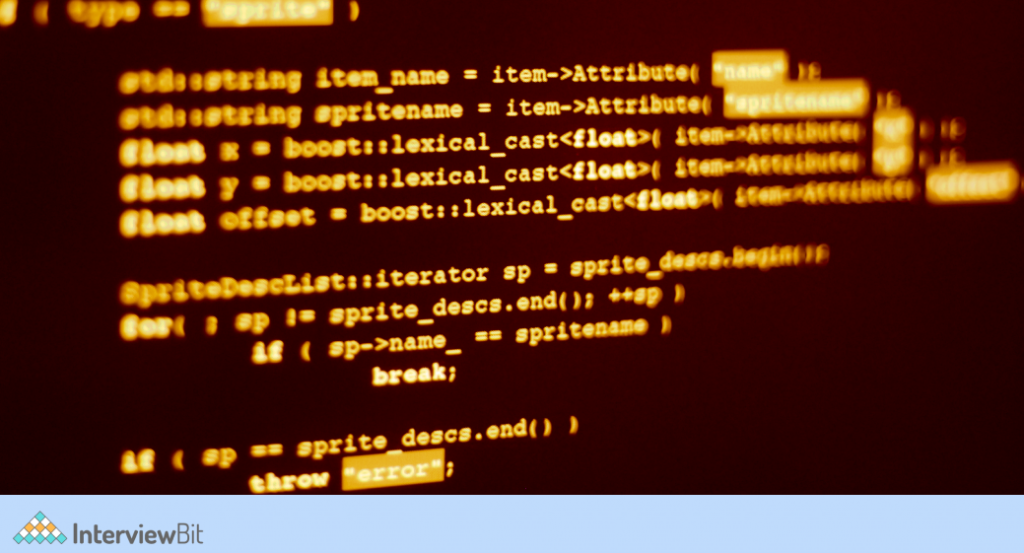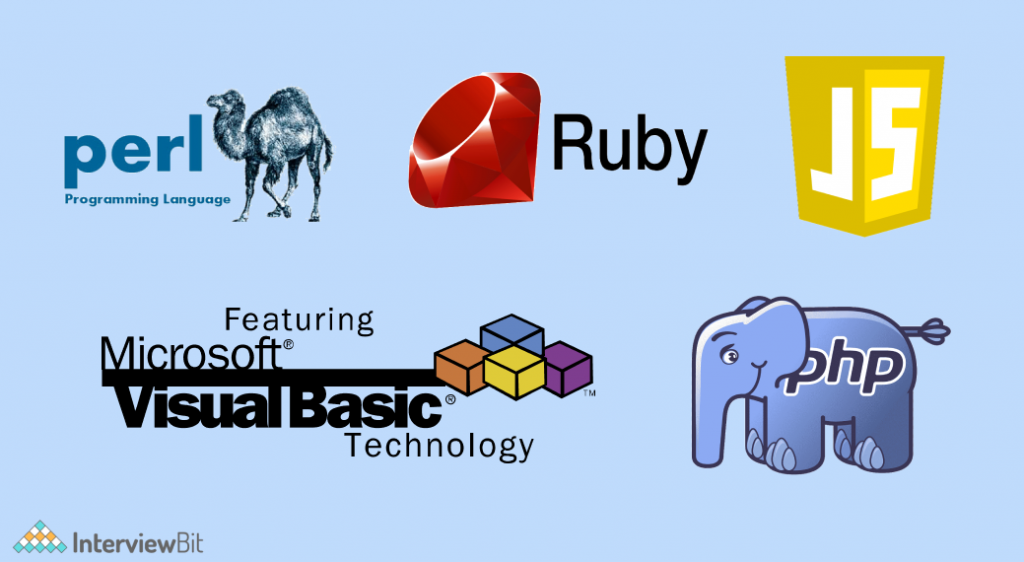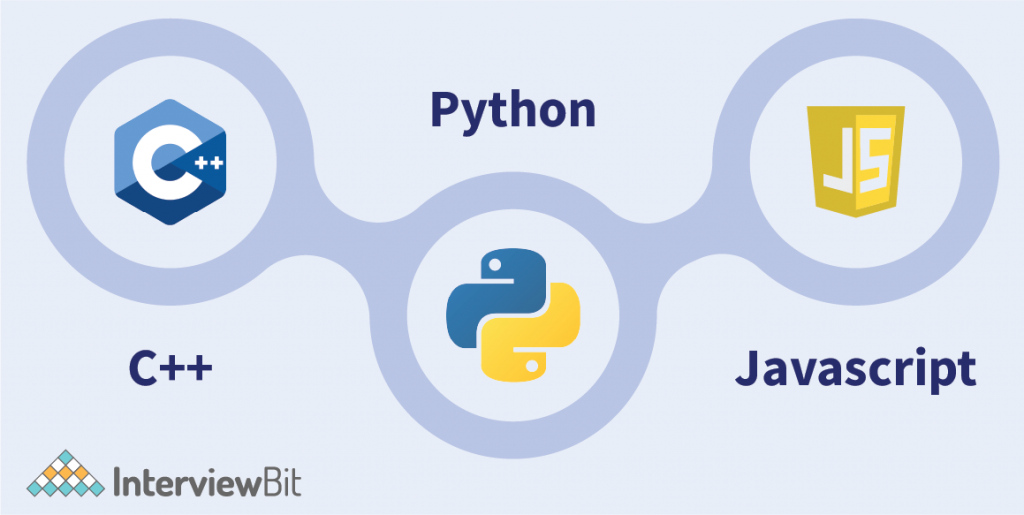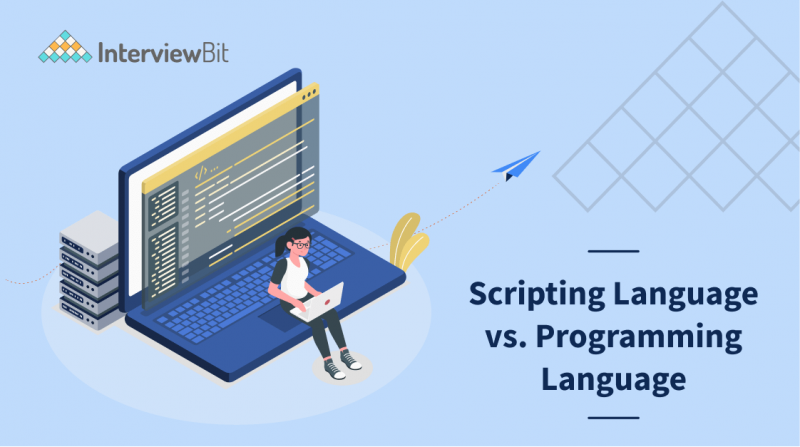Many people often do not know the differences between scripting languages and programming languages and use the terms interchangeably. They might sound similar but are quite different from each other. Everyone who wants to set foot in the world of software development must know the differences between scripting languages and programming languages. Recent developments in the world of programming have, however, blurred the line of distinction between them.
Both languages are used for software development. All scripting languages can be used as programming languages but vice versa is not true. The basic difference between them is that scripting languages are not compiled, they are interpreted. Before the advent of scripting languages, programming languages were used to develop software like Microsoft PowerPoint, Microsoft Excel, Internet Explorer, etc. However, there arose a need for languages to incorporate additional functionalities, hence the need for scripting languages. Let us now understand scripting language and programming languages in detail, and then we will look at some differences between them.

What is a Scripting Language?

A scripting language is a programming language designed specifically for runtime environments. It automates the execution of tasks. They are used in system administration, web development, games, and creating plugins and extensions. These languages are interpreted languages (An Interpreter executes instructions written in a programming or scripting language directly, without requiring them previously to have been compiled into a machine language program), and they bring new functionalities to the applications. These languages are usually short and snappy and are interpreted from the source or byte code. Mostly, scripting languages are open-sourced languages and are supported by almost every platform, which means that no special kind of software is required to run them, as they are a set of commands run without the use of a compiler.
Depending on your aim and circumstances, using a scripting language is better. There are two main types of scripting languages-
Confused about your next job?
- Server-side scripting language: Server-side scripting languages are used to create dynamic web pages. They are executed at a web server. These languages perform backend operations. Examples- PHP, Python, Node.js, Ruby, and Pearl.
- Client-side scripting language: Client-side scripting language runs off the browsers. These languages are considered front end languages. Examples- HTML, jQuery, CSS and JavaScript.
Key Features of Scripting Language
- Easy to learn and use- They are often a great starting point for those who want to step their foot in the world of development. They are easy to learn and implement. JavaScript and PHP are some of the easiest scripting languages.
- Open-source and free- Most of the scripting languages are open-sourced, which means there are no limits on who can utilize scripting languages. All they have to do now is study them and integrate them into their existing system. They’re all open-source, which means anyone around the world can contribute to their development.
- Powerful and extensible- Scripting languages are powerful (in terms of application) enough so that the necessary tasks can be accomplished with the scripts. Scripting languages are also highly extensible, i.e., you can add certain features if you feel them necessary.
- Cross-Platform- Scripting languages offer another significant advantage: they are portable and cross-platform, as they execute on a remote server or in the visitor’s web browser. This means they don’t require any additional software to run, and they can be used with any browser on any operating system and platform.
- Lighter memory requirements- Unlike programming languages, they are not compiled, instead, they are interpreted. Therefore, they require smaller memory from the systems running them.
- Runtime Execution- An application can be configured and modified while it is running using a system that permits code to be executed during runtime. This capacity is, in fact, the most important feature that makes scripting languages so important in most applications. Debugging and a rich in-game console are both aided by runtime code execution.
- Safe and secure- Scripting languages have been designed with security in mind. A scripting language does not allow any illicit operations to be performed from the script and even stops native code from accessing information stored in the script.
What is a Programming Language?

A programming language is used to interact with computers to develop mostly used to build desktop apps, websites, and mobile apps. It’s a sequence of instructions written to accomplish a given goal. C, C++, Java, and Python are some of the examples of programming languages. Programming languages usually consist of two components-syntax(form) and semantics(meaning). They are used to implement algorithms and enable computers to perform actions.
Programming languages can be classified into three categories:
- Machine language- Machine language is a type of low-level language that computers can understand easily. They are composed of instructions in binary or hexadecimal and are the elemental language of computers.
- Assembly language- Assembly language (ASM) is yet another low-level programming language created for specific processors. It is just a symbolic and human-understandable representation of the collection of instructions. It translates assembly language to machine language using an assembler.
- High-level language- HLL is a high-level programming language that is used to create user-friendly software and websites. This programming language necessitates the use of a compiler or interpreter to convert the code written by the user to the machine language (language understood by the computer). A high-level language’s main advantage is that it is simple to read, write, and maintain. Python, Java, JavaScript, PHP, C#, C++, Cobol, Perl, Pascal, LISP, FORTRAN, and Swift are examples of high-level programming languages. High-level language can be further divided into:
- Procedural-oriented programming languages
- Object-oriented programming languages
- Natural Language
Key Features of Programming Languages
- Simplicity: Most modern languages like Python have a simple learning curve. There is usually a tradeoff between the simplicity of a language and its speed and abstraction (ability to hide complicated details).
- Structure: Every programming language follows a proper predefined structure like predefined syntax, semantics, set of rules, etc.
- Abstraction: It refers to the ability of the programming language to hide complicated details which might be unnecessary for the users. It is one of the most important and essential features of object-oriented programming languages.
- Efficiency: To avoid consuming too much memory or taking too long, programming languages are translated and performed efficiently.
- Portability: Programming languages are portable, which means that they should be simple to transfer from one computer to another.
Are Scripting Languages and Programming Languages the same?
No, scripting languages and programming languages are not the same. Programming languages were created to make complex software, whereas scripting languages were created to assist programming languages. Programming languages are compiled whereas scripting languages are interpreted. We shall have a look at some differences between programming languages and scripting languages in the next section.
Difference Between Scripting Language and Programming Language

Let’s now look at some of the differences between programming languages and scripting languages. The table below contains some contrasting features between these languages.
| Programming Language | Scripting Language |
| A programming language is a type of computer language that consists of a set of instructions for communicating with computers. | A scripting language is a kind of programming language that is used to automate the execution of operations in a runtime environment. |
| Most programming languages are compiled. The translation overhead is incurred just once when the source is compiled; after that, it merely needs to be loaded and run. | Most scripting languages are interpreted languages. They must be parsed, interpreted, and executed each time the program is run. |
| Traditional programming languages are based on low-level languages. | Scripting languages generally prefer high-level languages. |
| Execution of a program takes more time since they are compiled. | Execution of a script takes less time as scripts are generally short. |
| It is used to create a new program or piece of software from the scratch. | It is used to enhance an existing program or automate a specific task. A scripting language is used to control the behavior of a program. |
| Most regular programming languages are stronger in data and control abstraction. | Scripting languages generally emphasize the extensibility and richness of expressions. |
| Furthermore, a programming language runs or executes independently. | A scripting language runs inside a parent program. |
| A programming language generally requires many lines of code to accomplish a particular task. | A scripting language usually requires fewer lines than a programming language to accomplish a task. |
| Programming languages have high maintenance costs. | Scripting languages typically have a low maintenance cost. |
| Programming languages generate .exe files. | Scripting languages do not create .exe files. |
| User interface design and graphic design are often partially supported by programming languages. | User interface design, data types, and graphic design are all greatly aided by scripting languages. |
| Programming languages are designed to make full-fledged software development easier. | Scripting languages are used to assist programming languages and make coding easier and faster. They are typically used for open projects and web development. |
| Programming language code takes a long time to develop since more code must be written (in most cases). | Scripting languages take less time to code, as fewer lines (in most cases) of code are to be written. |
| Programming languages are self-executable. | Scripting languages require a host. |
| All programming languages are not scripting languages. | All scripting languages are programming languages. |
| Examples include C, C++, Java, Python, etc. | Examples include Perl, PHP, JavaScript, etc. |
Conclusion
We thus conclude that the execution process and environment are the fundamental differences between programming languages and scripting languages. Scripting languages can alternatively be described as extensions to existing programs (written in a programming language). The majority of programs and software are written in programming languages, although functionality is defined using scripting languages. While programming languages are used to develop programs and software from scratch, scripting languages are used to incorporate additional functionalities into the program. The growing demands for dynamic web pages and apps have further intensified the demand for scripting languages, and the need for traditional programming structures to build complex software products is never going to cede. Scripting languages are beautiful structures that stand on the base that programming languages are. Both languages have their own set of pros and cons and are meant to complement each other.
Frequently Asked Questions
- Is SQL a scripting language?
Yes. SQL is a fourth-generation language, which means it’s a scripting language that doesn’t need to be compiled. SQL, like most fourth-generation languages, necessitates the use of a translator rather than a compiler.
- Is scripting harder than programming?
No, scripting is not harder than programming. In fact, it is easier to learn and use a scripting language than a programming language.
- Which scripting language is easy?
Almost all scripting languages are easy to learn. JavaScript and PHP are some of the easiest scripting languages.
- Is HTML a scripting language?
No. HTML is not a scripting language. It is a markup language used to design documents to be displayed in web browsers.
- Is scripting language a programming language?
A scripting language is a programming language that uses an interpreter instead of a compiler to execute tasks within a unique run-time environment. They’re usually short and quick, and they’re interpreted from source or byte code.




